
Spider mites are very small pests, less than 1 mm or .04 inches in length, known to feed on several hundred species of plants. Spider mite populations thrive in warm, dry conditions which makes them one of the most common pest problems cultivators face on indoor and greenhouse cannabis crops.
Often found hiding on the underside of leaves, spider mites can vary in color and lay small transparent eggs that hatch every three days. The spider mite life cycle lasts approximately 2-3 weeks as they move through four life stages: egg, larva, nymph and adult.
It is important to understand the spider mite life cycle and act fast when they are identified. A spider mite infestation will reduce cannabis yield and put the purity and potency of your crop at risk. Spider mites feed on sap and chlorophyll, damaging plants.
Part of the Tetranychidae family, spider mites are capable of spinning webs on the leaves, stems and flowers of cannabis plants. Webs allow them to trap natural predators and protect both themselves and their eggs. That’s how they got the “spider” part of the name.
When left untreated, spider mite populations reproduce fast, using webbing to protect their eggs. In the flowering stage, webbing is difficult to remove and any eggs inside the crevasses of the flower will hatch and feed on the flower.
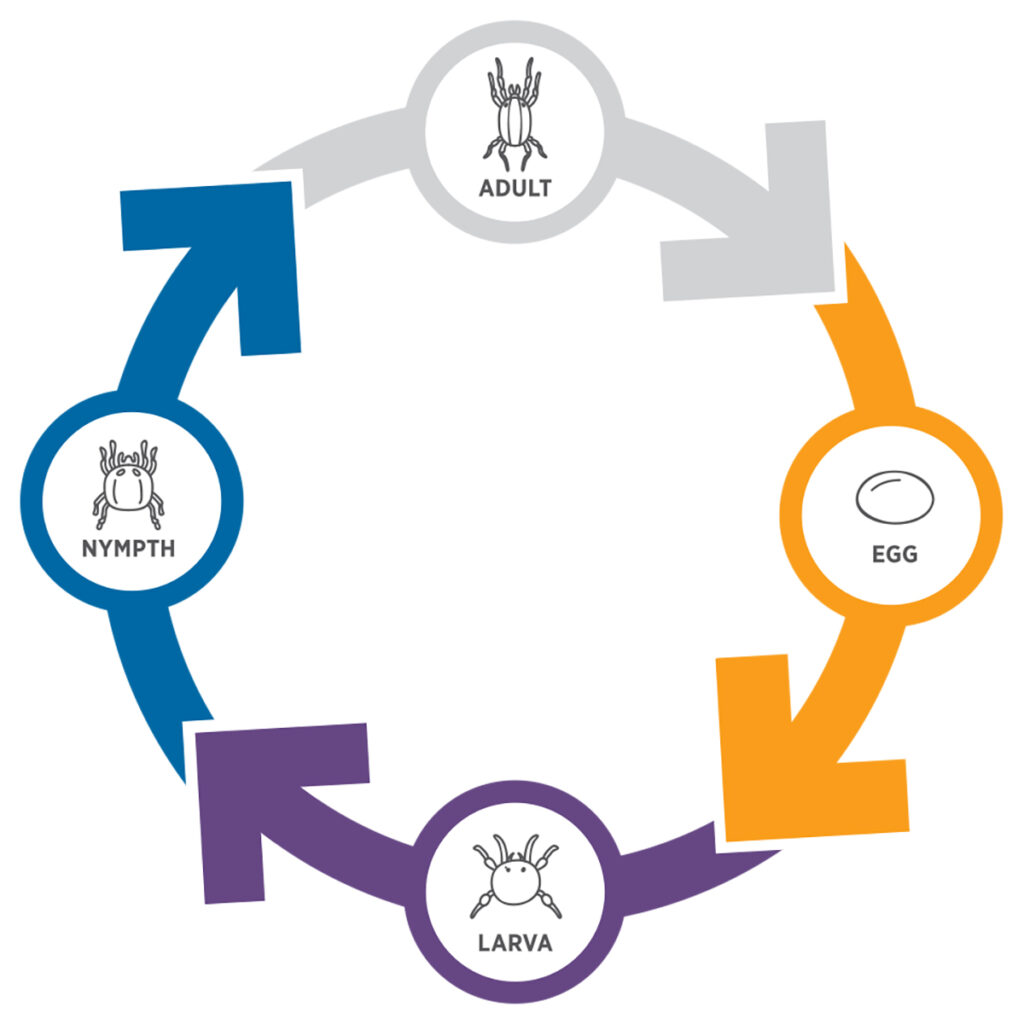
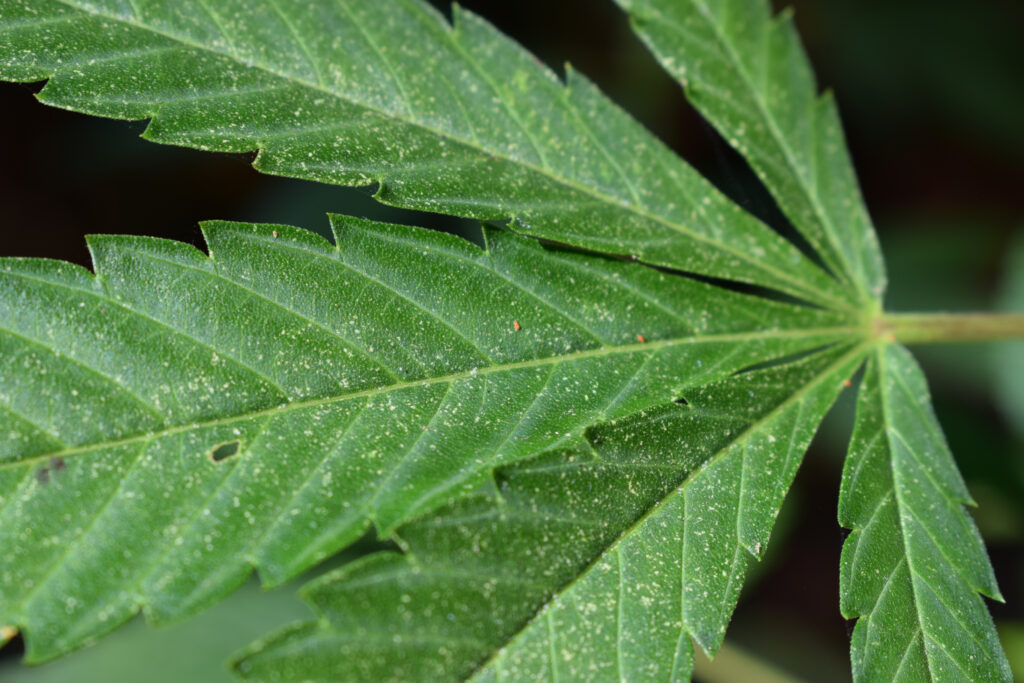
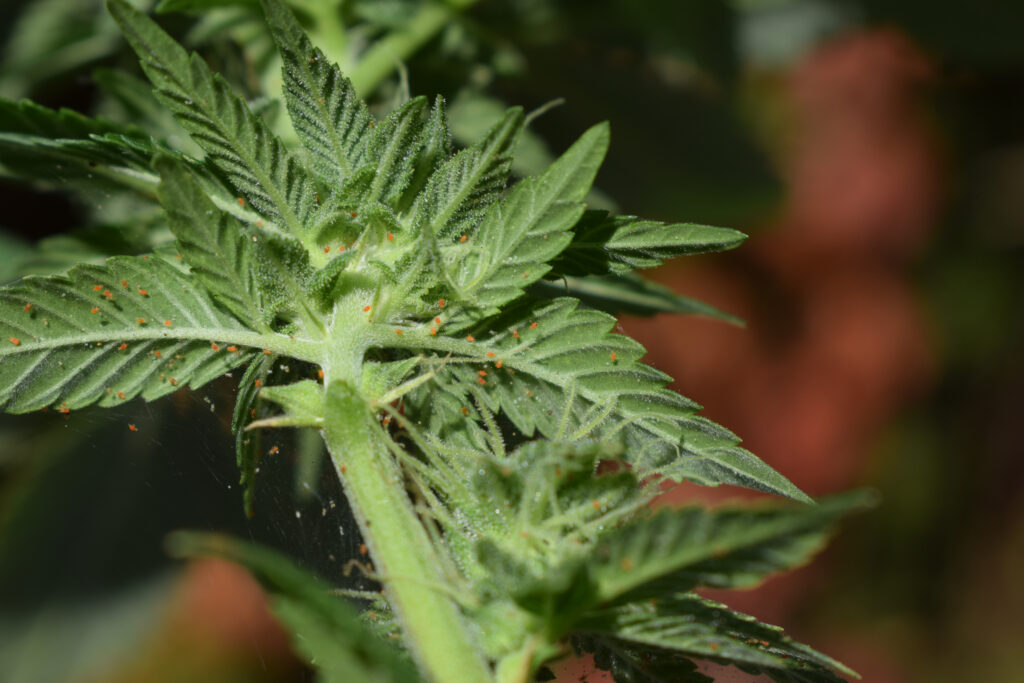
Spider mites are common on many different types of leafy plants, including cannabis. They can be transferred from other infested plants and through clothing, wind and even pets. Some environmental conditions that increase the likelihood and spread of spider mite populations are:
It is very difficult to see spider mites which is why they are usually not identified until webs are visible and the damage is done.
Early signs of damage include tiny spots or discolorations on the top of leaves. If there is an infestation, many cultivators notice webbing. In both cases, use a microscope or magnifying glass to closely examine the underside of the leaves for any crawling mites.
There is no way to repair the damaged leaves
Once you have identified spider mite damage, there is no way to repair the damaged leaves, but you can eradicate the population and promote healthy new growth.
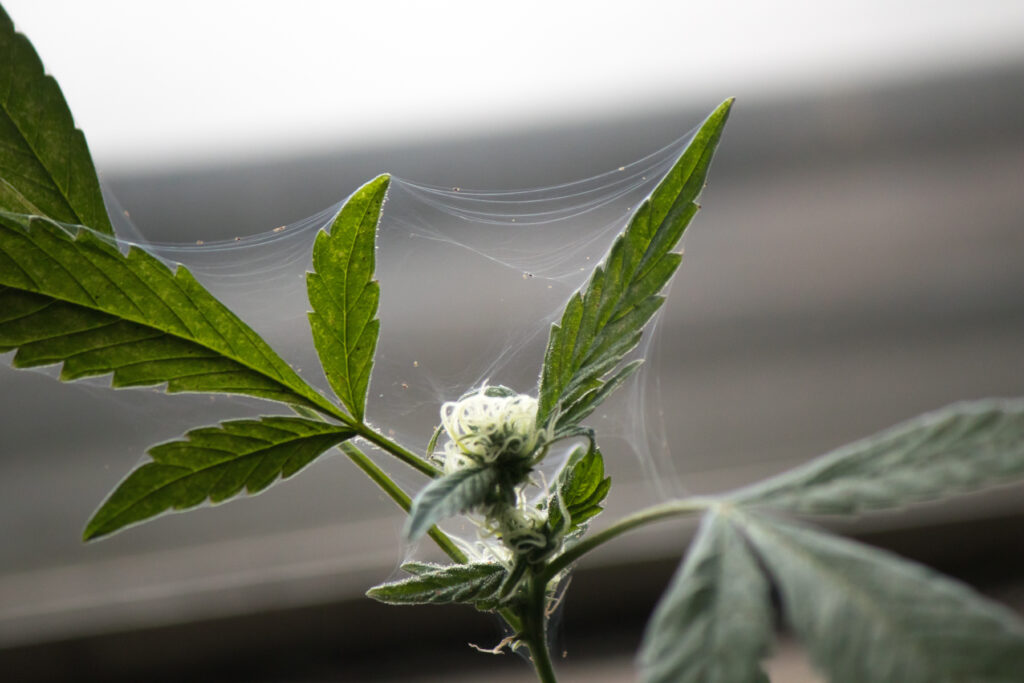
Your grow room environment is key. Maintain proper environmental conditions like temperature, humidity and ventilation. After 75°F, the warmer the temperature, the faster spider mites can reproduce. Here are some tips to make pest prevention second nature:
Wait 2-3 weeks before integrating new clones into your existing environment.
Moving from a room with pests to a clean room is a great way to spread the problem. Sanitizing clothes worn should be done before moving to the next room.
Frequent checks by visual inspections should become a habit. Regularly scout for pests with a microscope. Throughout the veg and flower stages, look at the bottoms or undersides of the leaves.
Do not mix products at half strength. Treat at the first sign of a problem at the curative rate.
Considering the preventative tools outlined above, the best way to treat spider mites is with safe pesticide controls. Grower’s Ally Crop Defender 3 and Spider Mite Control formulas are both highly effective, OMRI Listed® formulas for spider mite, russet mite and soft-bodied insect prevention. If you’re deciding which miticide is best for you, here is a helpful chart to use for your unique grow situation.
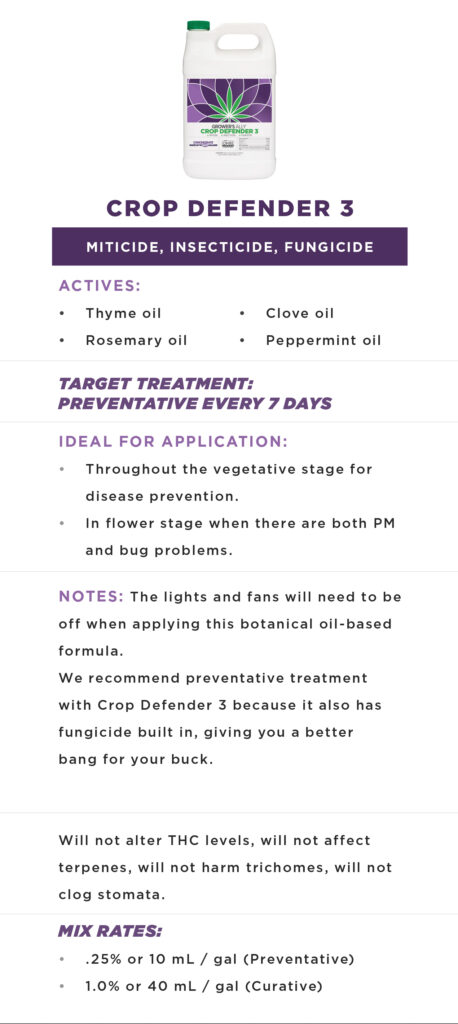
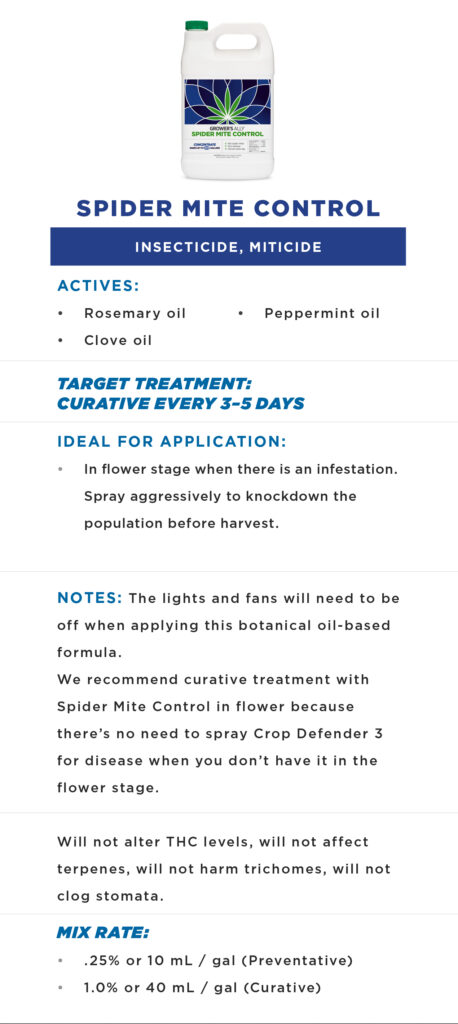
Essential oils, like rosemary, are highly effective at knocking down soft-bodied insects. While many oils kill by suffocation, the primary mode of action in the Grower’s Ally formulas paralysis, then suffocation. Insects that can’t move also can’t eat, can’t reproduce and can’t cause any more damage. Because it is a light essential oil, the chemistry of the formula volatizes in 48 hours and leaves behind no residue.
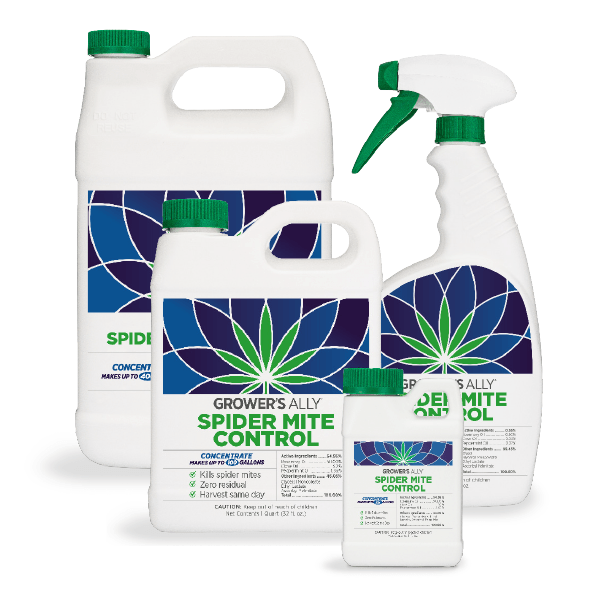
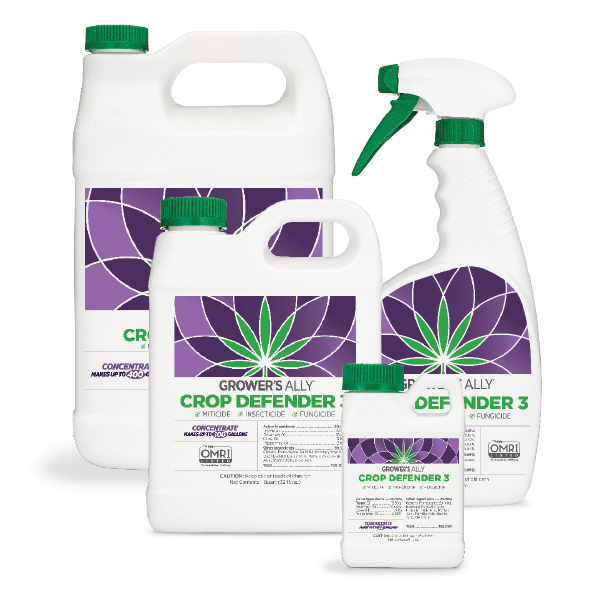
After a treatment of Grower’s Ally, spider mites will drop their eggs. The eggs will attempt to hatch 3-4 days later, so it is extremely important to treat every 3 days until the infestation is eradicated, otherwise the cycle will continue.
If you can see webbing from the mites, they are in an accelerated stage and the issue needs to be taken seriously. If you have this situation, here are a few tips:
With proper treatment and environmental controls, spider mites can be eradicated in 2-4 weeks. If you’d like to discuss treatment protocols or discuss your unique situation with our team, please contact our customer care team or connect with us on social media.
We're committed to protecting people, plants and profits. Grower's Ally will always provide highly effective, all-natural solutions for cultivators. Commercial cultivators can shop direct to grower or purchase our products on Amazon. If you want to see Grower's Ally in your local hydro store, contact our sales team. Stay connected with Grower's Ally on Facebook, Instagram and Twitter for product updates, giveaways and exclusive promotions.
